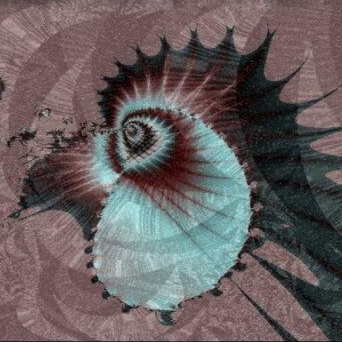You have the mu-opioid receptors which are responsible for mediating all the wonderful, classical opiate effects; you just generally feel extremely comfortable and content when it's activated. Then you have delta-opioid receptors which I guess are responsible for mediating some portion of the pain relieving qualities of opioids.
But then there is the kappa-opioid receptor which the active drug contained within Salvia Divinorum binds to. Like what? Lmao that's kinda bizarre that an opioid receptor is mediating such wild effects. People don't generally think an opioid receptor being activated can make you believe you're in the humans-are-chairs dimension, but here we are. Also the weird, extreme feelings of dysphoria kappa activation can cause, like a feeling of impending doom. Polar opposite to the mu-receptors in possibly every way.
What's weirder is the body has a natural endogenous agonist for the kappa receptor. It's called dynorphin. Kind of like the opposite of endorphins. Like wtf, why would my body want to be activating the kappa opioid receptor ever at all. I feel like this thing needs more research.
Buprenorphine, the active drug in Suboxone, is actually a mixed opioid agonist/antagonist. It's a partial agonist at the mu-opioid receptor. This means it activates it to the extent it will stop withdrawals and cravings, but if you have an opioid tolerance it won't activate it enough to get you high. But it's also an antagonist at the kappa-opioid receptor.
You know the drug Naloxone? It's used to revive people from an opioid overdose. It works by being an antagonist at the mu receptors. That means it binds to the receptor but doesn't activate it. In doing so it reverses the effects of any opioids in your system such as respiratory depression. Since it is then taking up space on the receptor, the other opioid molecules in your body are then unable to bind to it themselves. This reverses the overdose.
As I said, Buprenorphine does this at the kappa receptor. That means people on Buprenorphine have blocked kappa-opioid receptors that their natural endogenous dynorphin can't bind to. What is the opposite of thinking you're a piece of furniture? Idk, but this suggests to me that if someone is having a bad Salvia trip, you could probably reverse it by quickly giving them Buprenorphine. The same way that Naloxone reverse mu-opioid overdoses.
But what's more interesting to me is wondering about the long term effects of never having Dynorphins binding to my kappa-opioid receptors. Why would I ever want Dynorphins to bind to it? People don't generally describe the Salvia experience as pleasant. Idk
Just wondering out loud here, the way drugs interact with your brain to significantly alter your consciousness is very fascinating to me


deleted by creator
Yeah there a ton of weird opioids. Normally people think of just Heroin, Morphine, Oxycodone, and such, but there is a ton of variety.
Kratom is almost like an alternative and weaker Opium Poppy. Like the Poppy, it contains a large number of alkaloids active at the opioid receptors. The main one is Mitragynine, which interestingly, is a partial agonist at the mu-opioid receptor just like Buprenorphine, the opioid most commonly prescribed to treat opioid use disorder. People use it to get clean from opioids all the time due to sharing this property with Buprenorphine.
Partial agonists are extremely hard to overdose on because they don't activate the mu-opioid receptor enough to cause significant respiratory depression. However, Kratom also contains 7-Hydroxymitragynine which is a full agonist at the mu-opioid receptor, though it is contained in much smaller concentrations than Mitragynine. This is probably why people find it more recreational than Buprenorphine.